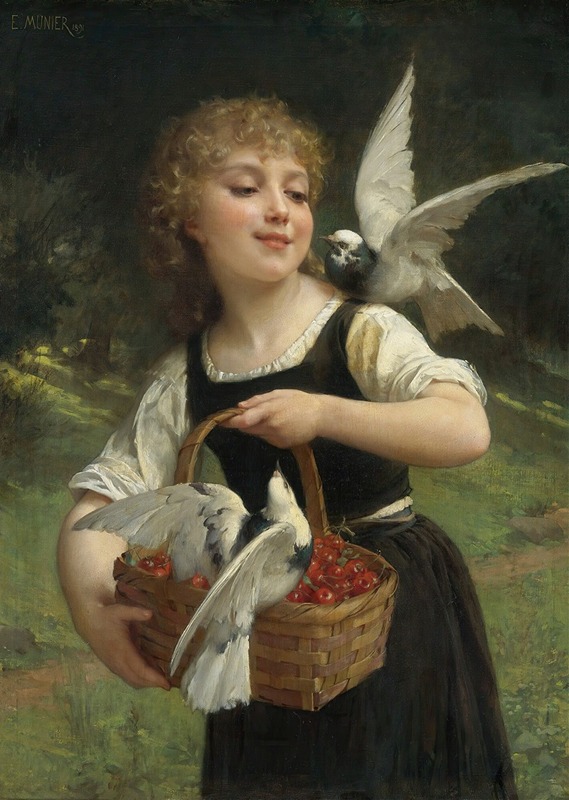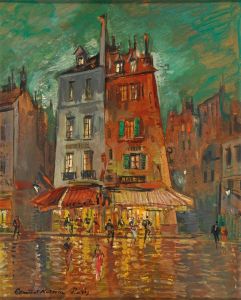
Messenger Of Love
A hand-painted replica of Émile Munier’s masterpiece Messenger Of Love, meticulously crafted by professional artists to capture the true essence of the original. Each piece is created with museum-quality canvas and rare mineral pigments, carefully painted by experienced artists with delicate brushstrokes and rich, layered colors to perfectly recreate the texture of the original artwork. Unlike machine-printed reproductions, this hand-painted version brings the painting to life, infused with the artist’s emotions and skill in every stroke. Whether for personal collection or home decoration, it instantly elevates the artistic atmosphere of any space.
Émile Munier was a French academic artist known for his detailed and charming depictions of children and domestic scenes. One of his notable works is "Messenger of Love," a painting that exemplifies his skill in capturing the innocence and beauty of childhood. Munier was born in Paris on June 2, 1840, and studied under the tutelage of William Bouguereau, a prominent figure in the academic art world. Munier's work often reflects Bouguereau's influence, particularly in the use of soft colors and the focus on the human form.
"Messenger of Love" is a fine example of Munier's ability to convey emotion and narrative through his art. The painting typically features a young child, often depicted with cherubic features, holding or interacting with a symbol of love, such as a letter or a dove. This imagery is consistent with the themes of innocence and purity that Munier frequently explored in his work. The child's expression and posture are carefully rendered to evoke a sense of tenderness and affection, inviting the viewer to engage with the narrative suggested by the title.
Munier's technique is characterized by meticulous attention to detail and a smooth, polished finish. He employed a traditional academic style, which was popular in the 19th century, focusing on realism and idealized beauty. His brushwork is precise, and he often used a soft palette to enhance the gentle and serene atmosphere of his compositions. This approach is evident in "Messenger of Love," where the delicate rendering of textures, such as the softness of the child's skin and the fine details of the surrounding elements, showcases Munier's technical prowess.
The painting reflects the broader context of 19th-century French art, which often celebrated themes of love, family, and domesticity. During this period, there was a significant interest in capturing the idyllic aspects of everyday life, and artists like Munier played a crucial role in popularizing these themes. His work was well-received by the public and critics alike, and he exhibited regularly at the Paris Salon, where he gained recognition for his contributions to the academic art tradition.
"Messenger of Love" is part of a larger body of work by Munier that continues to be appreciated for its aesthetic qualities and emotional depth. His paintings are held in various private collections and have been featured in exhibitions that celebrate 19th-century academic art. Munier's ability to capture the essence of childhood and the universal themes of love and innocence ensures that his work remains relevant and admired by art enthusiasts around the world.
In summary, Émile Munier's "Messenger of Love" is a testament to his skill as an academic painter and his ability to convey warmth and emotion through his art. The painting exemplifies the themes and techniques that define Munier's oeuvre, making it a significant piece within the context of 19th-century French art.


















